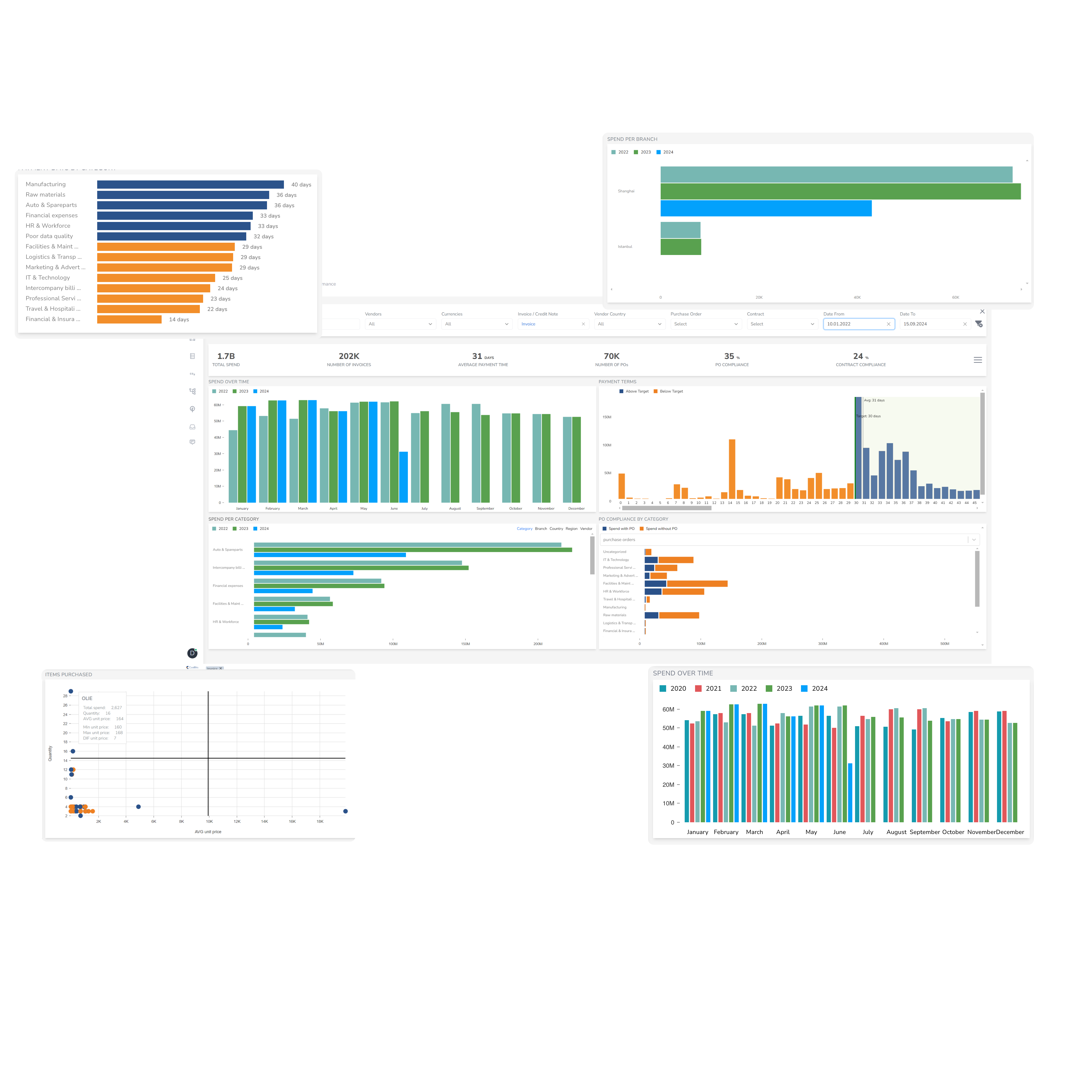Enabling efficient procurement
Gain instant transparency & insights to cut procurement costs and reduce your CO2 footprint.

Leveraging Extensive Real-World Expertise for Cost & CO2 Impact
Our team brings 25+ years in procurement leadership and 30+ years in data science from top multinational companies across the globe. We deliver a fast, intuitive, and time efficient cost reduction tool enabling your team to cut costs while boosting CO2 compliance and supplier performance.
We solve real issues for our clients.
"Procurement was understaffed and our CFO did (rightfully) not really trust our reporting - since it didn't fit with his accounting perspective on the supplier cost. Having now a uniform and easy to use CostBits solution that both Finance and Procurement can engage in - we can focus on execution and support each other in creating results instead of discussing data and poor numbers.”
"Their sales team did tell us that making a similar solution ourselves was not as easy as we made it up to be. Six months later we had only covered the basics, got stuck in excel and CSV files plus neither our data mapping nor the deep analytics visuals really worked. We went back to CostBits for their solution and got back on track in weeks."
"We thought that we already had great spend insights. We had the latest BI tools available, an existing external spend solution and a robust data collection setup. However when CostBits engaged our users - our own staff confirmed that no one used the inhouse BI setup and that they really only used 1-2% of the VERY expensive external spend solution. By moving to CostBits we finally provided our staff with a tool fitted for their actual purpose and right out of the box.”
The core of CostBits

Data Management Made Easy
We receive, merge, clean, and enrich your data, handling it all seamlessly so you can focus on cost reduction.

Instant Cost Transparency
Open the app to see all your costs in one place, giving you immediate insight into your procurement spend.

Clear Cost Reduction Guidance
We provide concrete, actionable guidance to identify where to cut costs, maximizing your savings and improving your bottom line.

ESG-Driven Insights
Support your ESG agenda by viewing all costs in CO2 equivalents, ensuring cost management aligns with your sustainability goals.
CostBits Insights
Subscribe to our blog for tips on efficient procurement, cost reduction strategies, and sustainable sourcing to protect our planet.



